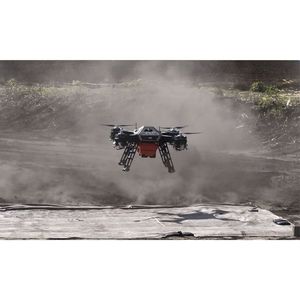National Security Innovation Capital (NSIC), a program within the Defense Innovation Unit (DIU) of the Department of Defense, has awarded a $1M contract to Parallel Flight Technologies (PFT), a California-based heavy-lift drone and hybrid propulsion technology company. This contract will support the advancement and expansion of its Long-Range Unmanned Aircraft System (UAS) to address emerging defense and commercial applications.
Parallel Flight is at the forefront of developing its Firefly Hybrid Unmanned Aircraft System (UAS), which is poised to address critical mission limitations faced by current UASs. These limitations, including range and lift capacity, hinder existing platform utilization in mission-critical logistic functions. PFT’s proprietary Parallel Hybrid Electric Multirotor (PHEM) architecture offers flight time gains at affordable costs for end users. This contract is the first phase of an anticipated multi-part agreement, which will equip Firefly with a BVLOS (beyond visual line of site) communication system that enables the aircraft to fly autonomously via waypoint for the full extent of its impressive 280-mile range capability, as well as validate the aircrafts TBO (time-between-overhaul) targets.
“We are thrilled to receive this $1 million dollar award to continue development and focus on the advancement of our technology. This is a resounding vote of confidence from NSIC in the application and need of our technology across the Department of Defense,” says Craig Stevens, CEO of Parallel Flight Technologies. “This contract reinforces our commitment to using our proprietary technology to enhance military, public safety and commercial applications”.
The primary market for this advanced prototype within the DoD is blood and medical supply delivery in austere environments. However, once successfully demonstrated in the medical delivery sphere, it is anticipated that the UAS will be quickly adopted for additional military applications with similar payload and range requirements. For commercial use-cases, high demand for PFTs UAS is expected across numerous verticals, including wildfire and land management, powerline, utility/infrastructure, medical/disaster logistics, agriculture, maritime operation and wind-turbine related missions.
 Unmanned Aerial Vehicle The latest drone news
Unmanned Aerial Vehicle The latest drone news



